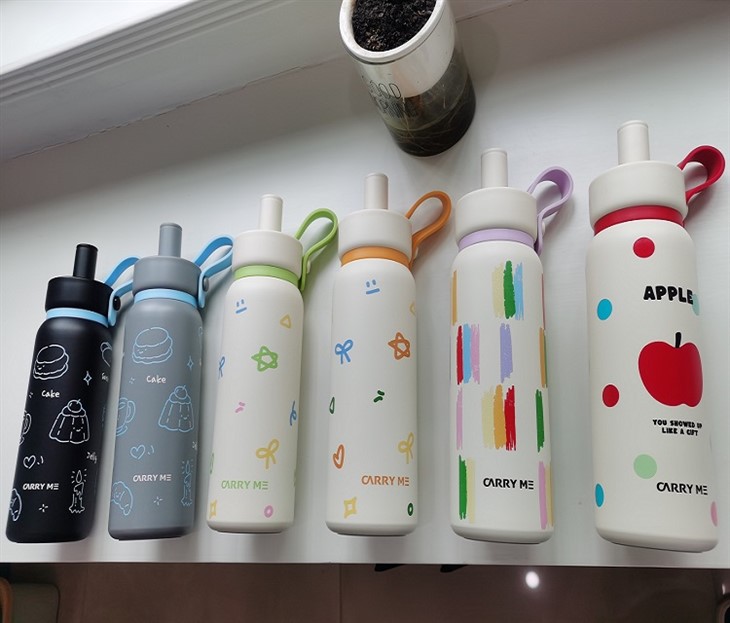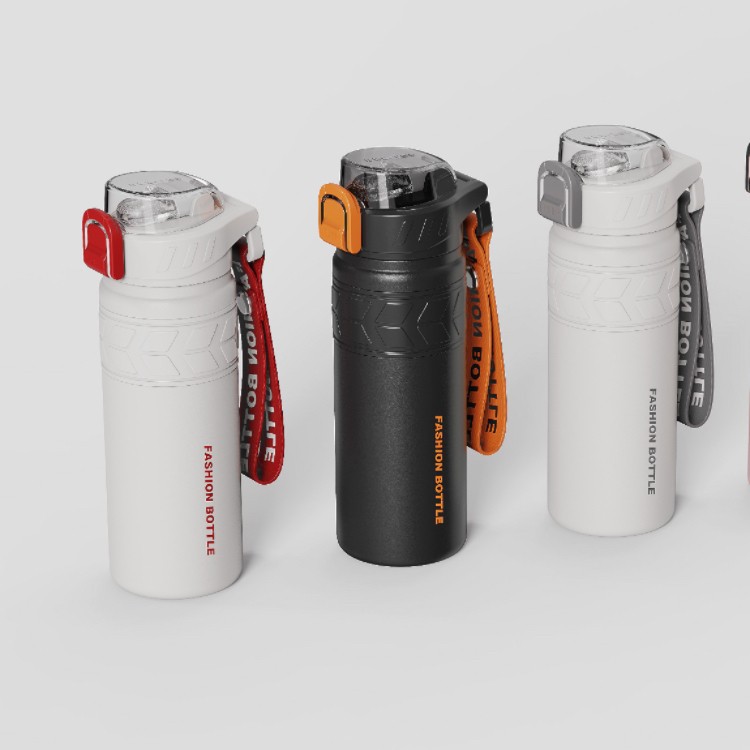Stainless steel water bottles have gained immense popularity in recent years due to their durability, eco - friendliness, and ability to keep beverages at the desired temperature. As a trusted stainless steel water bottle supplier, I often encounter a common question from customers: "Do stainless steel water bottles rust?" In this blog post, I'll delve into the science behind stainless steel, explore the factors that can lead to rusting, and provide tips on how to prevent it.
Understanding Stainless Steel
Stainless steel is an alloy primarily composed of iron, chromium, and small amounts of other elements such as nickel, manganese, and molybdenum. The key element that gives stainless steel its corrosion - resistant properties is chromium. When chromium is exposed to oxygen, it forms a thin, invisible layer of chromium oxide on the surface of the steel. This layer acts as a protective barrier, preventing oxygen and moisture from reaching the iron in the alloy and thus inhibiting rust formation.
In general, stainless steel is classified into different grades based on its chemical composition and properties. The most common grades used in water bottle manufacturing are 304 and 316 stainless steel. Grade 304 stainless steel contains about 18% chromium and 8% nickel, offering good corrosion resistance and durability. Grade 316 stainless steel, on the other hand, has a higher molybdenum content (around 2 - 3%), which makes it even more resistant to corrosion, especially in harsh environments such as saltwater.
Factors That Can Cause Stainless Steel Water Bottles to Rust
While stainless steel is highly resistant to rust, certain factors can compromise the protective chromium oxide layer and lead to corrosion.
1. Exposure to Harsh Chemicals
Stainless steel can be damaged by exposure to strong acids, alkalis, and some cleaning agents. For example, prolonged contact with bleach, vinegar in high concentrations, or certain industrial chemicals can break down the chromium oxide layer, leaving the iron in the alloy vulnerable to oxidation. If you use a stainless steel water bottle to store acidic beverages like lemon juice or carbonated drinks for an extended period, it may also increase the risk of corrosion over time.


2. Physical Damage
Scratches, dents, or abrasions on the surface of the stainless steel water bottle can disrupt the protective layer. When the chromium oxide layer is damaged, oxygen and moisture can reach the underlying iron, initiating the rusting process. This can happen if the bottle is dropped, scraped against rough surfaces, or cleaned with abrasive materials.
3. High Humidity and Saltwater Exposure
In humid environments or areas with high salt content in the air, such as coastal regions, stainless steel water bottles are more likely to rust. Salt can accelerate the corrosion process by acting as an electrolyte, which facilitates the flow of electrons and speeds up the oxidation of iron. If you take your stainless steel water bottle to the beach or use it in a humid climate without proper care, it may develop rust spots over time.
Preventing Rust in Stainless Steel Water Bottles
As a stainless steel water bottle supplier, I want to ensure that our customers get the most out of their products. Here are some tips to prevent rusting in your stainless steel water bottles:
1. Choose the Right Grade of Stainless Steel
When purchasing a stainless steel water bottle, opt for high - quality bottles made from 304 or 316 stainless steel. These grades offer better corrosion resistance and are more suitable for long - term use. For example, our Flip Top Stainless Steel Sport Water Bottle With Straw is made from premium 304 stainless steel, providing excellent durability and rust resistance.
2. Avoid Storing Harsh Chemicals or Acidic Beverages
Do not use your stainless steel water bottle to store strong acids, alkalis, or industrial chemicals. If you want to store acidic beverages, try to consume them within a reasonable time and rinse the bottle thoroughly afterward. It's also a good idea to avoid leaving acidic drinks in the bottle overnight.
3. Handle the Bottle with Care
Be gentle with your stainless steel water bottle to prevent physical damage. Avoid dropping it or scraping it against rough surfaces. When cleaning the bottle, use a soft sponge or cloth instead of abrasive materials. Our Insulated Sports Water Bottle With Straw is designed with a durable exterior, but proper handling is still essential to maintain its appearance and performance.
4. Keep the Bottle Dry
After using the water bottle, make sure to dry it thoroughly, especially in humid environments. If you take your bottle to the beach or use it in a wet environment, rinse it with fresh water and dry it completely to remove any salt or moisture.
5. Clean the Bottle Regularly
Regular cleaning is crucial to maintain the integrity of the stainless steel. Use mild dish soap and warm water to clean the bottle, and rinse it thoroughly to remove any soap residue. Avoid using harsh cleaning agents that can damage the protective layer.
Our Product Range
At our company, we offer a wide range of stainless steel water bottles to meet different needs. Our Stainless Steel Water Bottle for Adults is designed with functionality and style in mind. It features a leak - proof design, double - wall insulation to keep your beverages hot or cold for hours, and a sleek, modern appearance. Whether you're an athlete, a professional, or someone who simply wants to stay hydrated on the go, our water bottles are the perfect choice.
Conclusion
In conclusion, while stainless steel water bottles are generally resistant to rust, they are not completely immune. By understanding the factors that can cause rusting and taking appropriate preventive measures, you can ensure that your stainless steel water bottle remains in good condition for years to come. As a reliable stainless steel water bottle supplier, we are committed to providing high - quality products and excellent customer service. If you're interested in purchasing our stainless steel water bottles or have any questions, please feel free to contact us for procurement and negotiation. We look forward to serving you and helping you find the perfect water bottle for your needs.
References
- ASM Handbook Committee. (1990). ASM Handbook Volume 13: Corrosion. ASM International.
- Callister, W. D., & Rethwisch, D. G. (2010). Materials Science and Engineering: An Introduction. Wiley.
- Fontana, M. G. (1986). Corrosion Engineering. McGraw - Hill.






